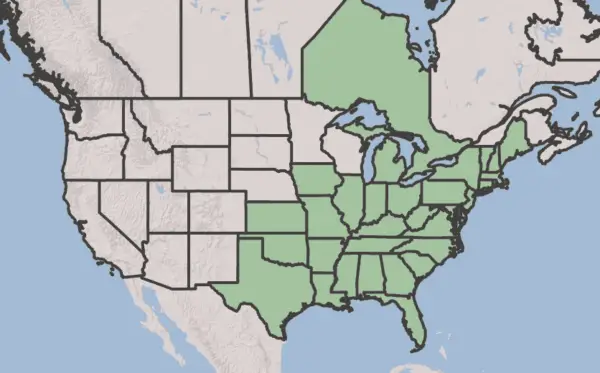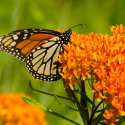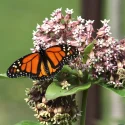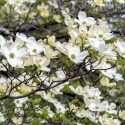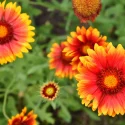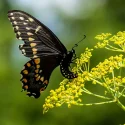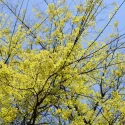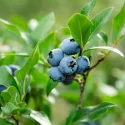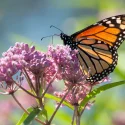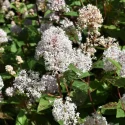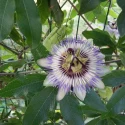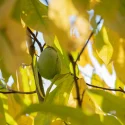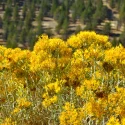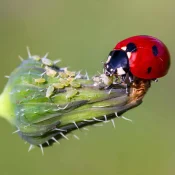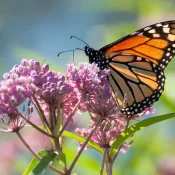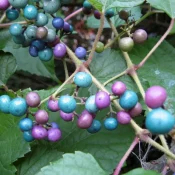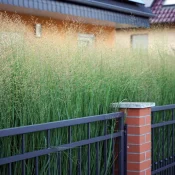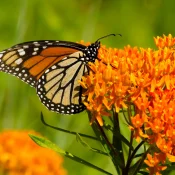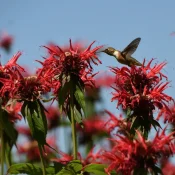Spicebush
This is a must-plant shrub for anyone’s landscape. Spicebushes are special for lots of reasons: the fragrant bright yellow flowers that cover the branches in early spring, the warm yellow leaves in the fall, and their special designation as the host plant for the Spicebush Swallowtail butterfly. They are extremely easy to grow alongside their attractive landscaping features. Scroll on for planting tips!
- Full Sun, Part Sun
- Small Tree (15-30')
- Spring flowers
- Host Plant
Spicebushes offer four seasons of beauty, especially in the fall
What are the benefits of planting Spicebush?
There are so many benefits to planting Spicebush—how easy it is to grow, its beauty throughout the seasons—but let’s start with how it helps Spicebush Swallowtail butterflies.
The Spicebush is the host plant for the Spicebush Swallowtail butterfly
These next few sentences can come as a shock to those of us who were raised reading The Very Hungry Caterpillar. There are hundreds of butterflies and moths whose caterpillars eat ONLY ONE PLANT. These picky-eater caterpillar favorites are called host plants.
Many of our beloved, iconic butterflies—like monarchs—eat only ONE PLANT (in the monarch’s case, it’s milkweed.) The only plant spicebush swallowtail caterpillars will eat, and the only plant a mom will lay eggs on are from the Laurel family, including Spicebush, sassafras, redbay, and camphortree.
Meet the Spicebush Swallowtail caterpillar and butterfly
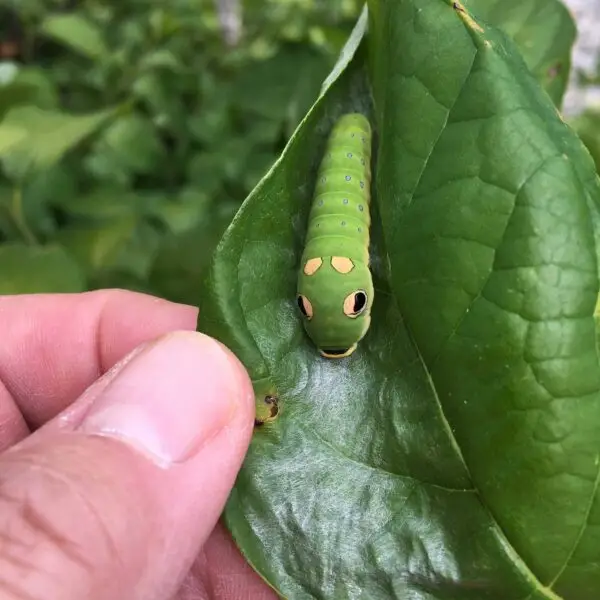
Fake-snake caterpillars!
The Spicebush Swallowtail caterpillar is absolutely one of the coolest caterpillars in America. It uses mimicry to look like a baby snake! This is a huge help in scaring away birds from eating them.
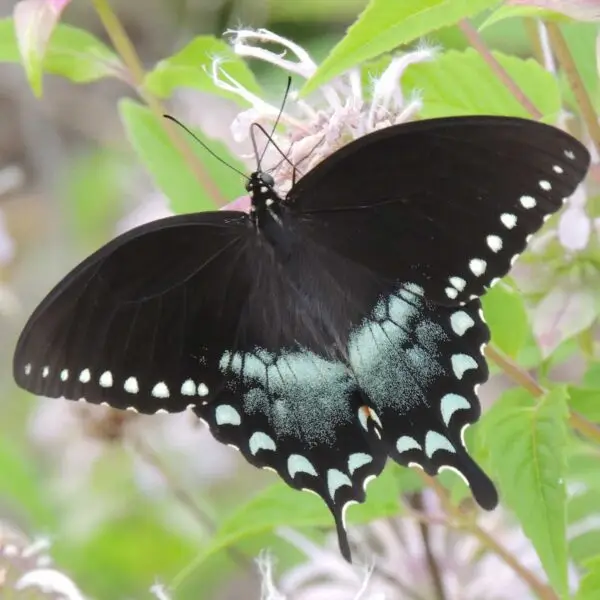
Turn into these beauties
When you’ve seen the Spicebush Swallowtail butterfly, you will remember it. Their inky black wings have iridescent blue and orange markings and scalloped edges. Stunning!
What is a host plant?
A host plant is a specific plant that a bug, butterfly, or caterpillar eats, lives on, or lays its eggs on.
Spicebushes make gardening easy
On top of Spicebush’s benefits to gorgeous (and fun-looking!) creatures, Spicebushes are exceptionally easy to grow. This is because Spicebushes have grown in North America for thousands of years, making them a native plant.
Native plants are the easiest and most resilient plants for our gardens and landscapes. There are three reasons why planting native ensures gardening success:
- Native trees are the preferred food and homes for pollinators and birds
- Native trees are made to thrive in the weather and soil of their home area; after they are established, they are happy with rain
- Native trees are gorgeous! They can make tulip flowers, have fringed flowers, or have banana-pineapple fruits
Where is Spicebush native?
Spicebush is native to a huge part of North America, including the Northeast, Mid-Atlantic, Midwest, and South.
Why is it called Spicebush?
This native plant gets its name from its good-smelling leaves—crush the leaves between your fingers and you’ll smell its spicey, bay-like scent.
Its yellow flowers also smell great—they have a floral, spicey smell. The flowers bloom in the early spring. It’s an all-around good-smelling plant!
Can you eat Spicebush leaves or berries?
According to the USDA, “the essential oils of leaves, twigs, and fruits have lent themselves for minor use for tea, and dried fruits have been used in fragrant sachets. Native Americans used dried fruits as a spice and the leaves for tea.”
Spicebush through the seasons
Unlike boring non-native shrubs (like boxwoods or yews) Spicebushes change dramatically throughout the seasons, always giving something to admire.
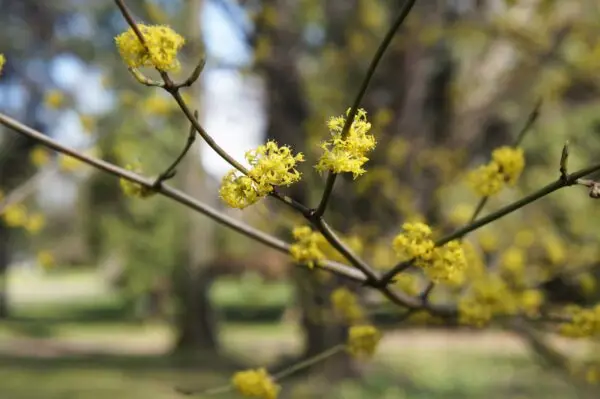
Spring
In the early spring, Spicebush’s fragrant yellow flowers emerge. They give a floral, somewhat spicey scent. (And they might remind you of another off-season bloomer: Witch-hazel.)

Summer
In the summer, Spicebush fills its branches with green leaves. This is the time you’ll see spicebush swallowtail butterflies come by and lay their eggs on the leaves and turn into caterpillars towards the end of the summer. When you brush by the leaves, you’ll smell their spicey, bay leaf-like scent.
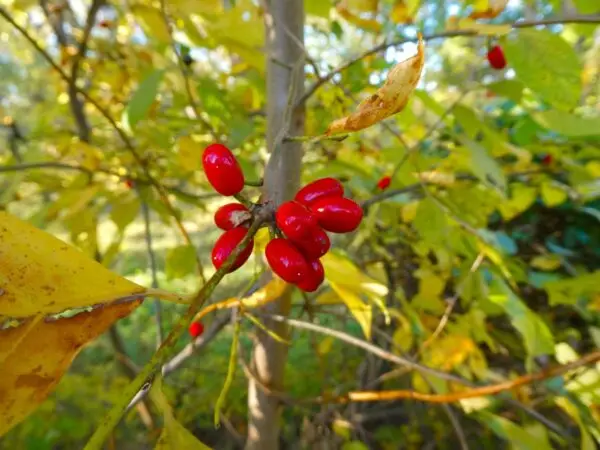
Fall
In the fall, Spicebush leaves turn buttery yellow. What was once flowers does something unexpected: they turn into bright red berries! These berries are a favorite of 20+ birds, including wood thrushes, one of the most beloved songbirds.
How to plant Spicebush
Spicebush are very easy to care for, as long as they are planted in areas that mimic their favored spots in nature.
Spicebush like rich soil and consistently moist areas
Spicebushes like rich soil that contains lots of organic matter, and like to be consistently moist. In nature, they are found in forests alongside deciduous trees (or trees that lose their leaves in the winter), making the ground around Spicebushes filled with lots of nutrients and organic matter.
Spicebushes can thrive in full sun to shade
As long as your Spicebush is planted in soil with organic matter and consistent water, this plant can thrive in a wide range of places.
Spicebush helped early European settlers decide where to live
According to the USDA, “Because of its habitat in rich woods, early land surveyors and settlers used spicebush as an indicator species for good agricultural land.” You can close your eyes and imagine how beautiful, verdant, and good-smelling North America was, when its forests were filled with natural Spicebushes.
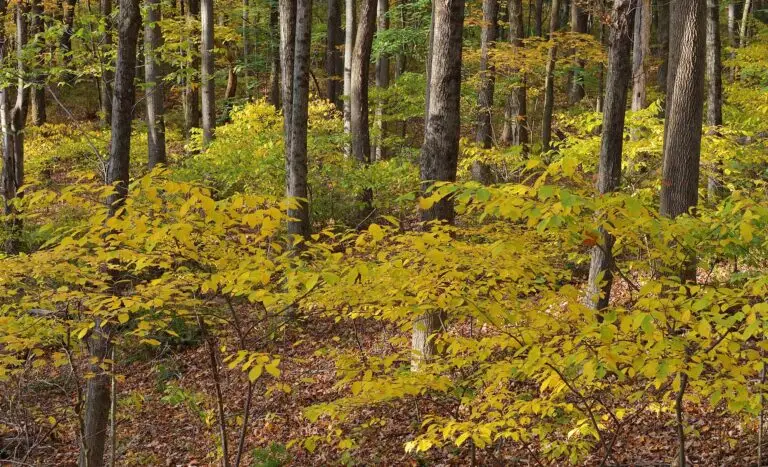
Where are good places to plant Spicebush shrubs?
Spicebushes are great for borders, for color in shade or part-shade gardens, and up against house foundations in front gardens.
Where can I find Spicebush plants?
Sometimes, specific native plants can be challenging to find, especially at conventional nurseries (and forget about big-box stores.) But there are lots of native plant-sourcing ideas; you just have to know where to look.
Here are four ideas to find a Spicebush near you:
Where can I find seeds and plants?
Finding native plants can be challenging (we partly blame Marie Antoinette.) To make it easier, we’ve assembled four sourcing ideas.
Native Nursery List
300+ native nurseries makes finding one a breeze
Online Native Plant Sellers
We've included 100+ online resources to help
Society Plant Sales
Every state has a native plant society; find yours
Online Communities
Local Facebook groups are a great plant source
What are good Spicebush pairings?
There are so many great native plants to grow with Spicebush. Check out our guide to native dogwoods, alongside Redbuds, Carolina Silverbell, and Wild Columbine.
Now you know how and why to add native Spicebush to your yard and landscaping! These plants offer transformation throughout the seasons alongside no-fuss easy care, especially compared to lawns or non-native plants. If you have kids—make sure you plan a spicebush swallowtail caterpillar hunt in the summer to find these fake-snake friends. And whenever you see a spicebush swallowtail butterfly in the future, you’ll know exactly what plant helped bring it to life. They are a beautiful addition to any Mid-Atlantic, Midwest, Northeast, or Southern garden. Happy planting!
Sources
- Nelson, Gil. Best Native Plants for Southern Gardens: A Handbook for Gardeners, Homeowners, and Professionals, (2010), 339-340.
- USDA, Spicebush Plant Guide.
